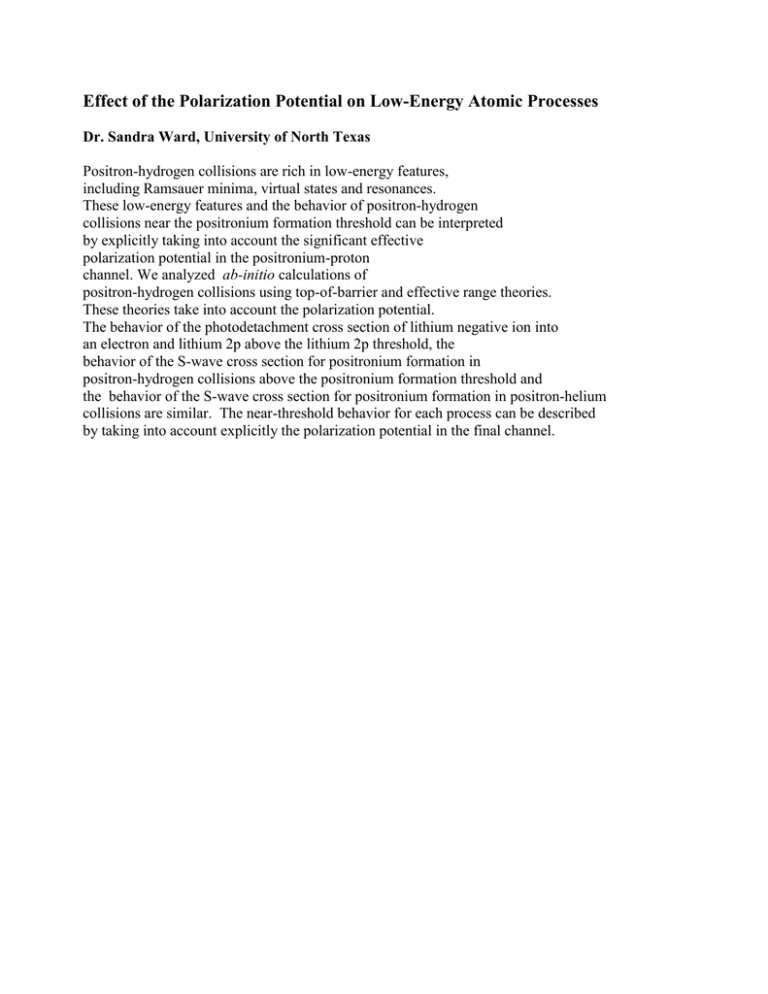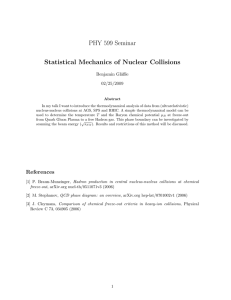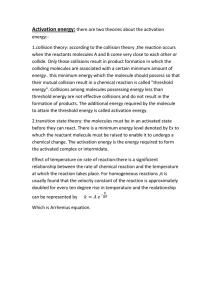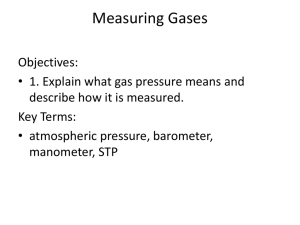Effect of the Polarization Potential on Low-Energy Atomic Processes
advertisement

Effect of the Polarization Potential on Low-Energy Atomic Processes Dr. Sandra Ward, University of North Texas Positron-hydrogen collisions are rich in low-energy features, including Ramsauer minima, virtual states and resonances. These low-energy features and the behavior of positron-hydrogen collisions near the positronium formation threshold can be interpreted by explicitly taking into account the significant effective polarization potential in the positronium-proton channel. We analyzed ab-initio calculations of positron-hydrogen collisions using top-of-barrier and effective range theories. These theories take into account the polarization potential. The behavior of the photodetachment cross section of lithium negative ion into an electron and lithium 2p above the lithium 2p threshold, the behavior of the S-wave cross section for positronium formation in positron-hydrogen collisions above the positronium formation threshold and the behavior of the S-wave cross section for positronium formation in positron-helium collisions are similar. The near-threshold behavior for each process can be described by taking into account explicitly the polarization potential in the final channel.





